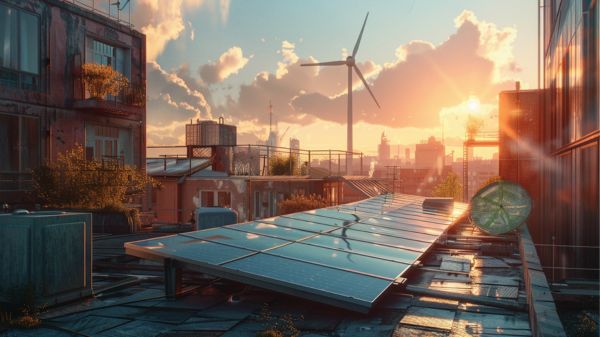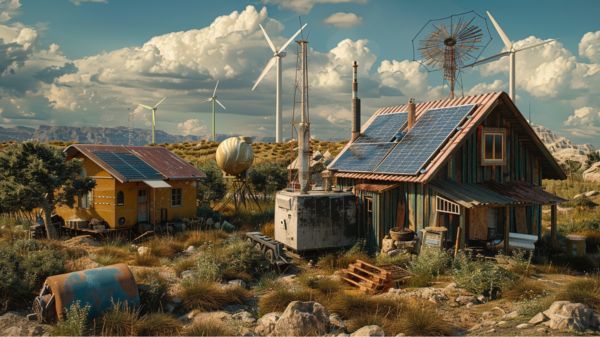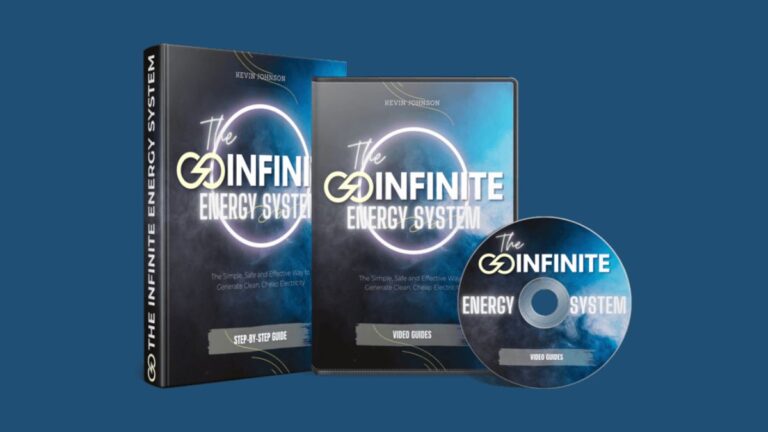Improve your energy collection systems affordably with strategic upgrades. Use power strips to manage standby power and save on utility bills. Install low-flow fixtures for water savings, like aerators reducing water flow by 30%. Utilize energy-efficient window treatments to reduce heat loss and gain.
Optimize solar panel placement for maximum sunlight exposure. Upgrade insulation to save up to 20% on heating and cooling costs. Smart thermostats, natural lighting strategies, energy-efficient appliances, and renewable energy sources can further improve energy collection efficiency. Implement these budget-friendly methods for enhanced energy systems performance.
Key Takeaways
- Utilize power strips to manage standby power efficiently.
- Install low-flow fixtures for water and cost savings.
- Use energy-efficient window treatments to reduce energy consumption.
- Optimize solar panel placement for maximum sunlight exposure.
- Upgrade insulation for significant energy savings and efficiency.
Power Strips for Standby Power
The utilization of power strips for managing standby power presents a cost-effective and efficient solution to reduce energy consumption and lower electricity bills. Standby power, which costs at least $11 billion annually in the U.S., accounts for a significant portion of energy waste in households and businesses.
By plugging devices into a power strip, individuals can easily control when power is supplied to multiple electronics, preventing them from drawing power when not in use. These power strips, which cost as little as $8 to $10, offer a simple yet effective way to combat standby power issues.
Additionally, the availability of federal tax credits for power strips further incentivizes their use. By implementing power strips strategically throughout a space, individuals can curtail unnecessary energy consumption, leading to substantial savings on electricity bills.
Low-Flow Fixtures for Water Savings
Enhancing water efficiency through the adoption of low-flow fixtures offers a practical solution for reducing water consumption and utility costs in both residential and commercial settings.
Low-flow shower heads, for example, can save up to 2,900 gallons of water per year for a family of four, while faucet aerators reduce water flow by up to 30% without compromising water pressure. Smart faucets equipped with motion sensor technology take water savings a step further, potentially saving up to 15,000 gallons annually.
Moreover, low-flow fixtures contribute to significant energy savings by reducing hot water usage by up to 60%. This reduction not only conserves water but also lowers energy bills associated with water heating.
Installing low-flow fixtures is a cost-effective and efficient way to promote sustainability while simultaneously benefiting from reduced utility expenses. By incorporating these fixtures, individuals and businesses can make a positive impact on both the environment and their budgets.
Energy-Efficient Window Treatments
Implementing energy-efficient window treatments is a strategic approach to enhancing the sustainability and cost-effectiveness of residential and commercial spaces. By installing solutions like solar shades and blinds, heat gain and loss through windows can be greatly reduced, leading to lower energy consumption.
These specialized treatments act as a barrier, helping to maintain indoor temperatures without excessive reliance on heating or cooling systems. As a result, homes can achieve improved energy efficiency, reducing the need for high levels of heating which often contribute to increased energy bills, especially during extreme weather conditions.
In addition, investing in energy-efficient window treatments not only offers long-term savings but also qualifies homeowners for tax credits, incentivizing sustainable choices.
Overall, these cost-effective upgrades not only enhance the comfort of living spaces but also contribute to environmental conservation by minimizing energy waste, making them a valuable addition to any home looking to optimize energy usage and reduce heating costs.
Optimal Placement of Solar Panels
For vital energy collection from solar panels, strategic positioning to maximize sunlight exposure is essential for enhancing efficiency and productivity. Proper placement of solar panels involves taking into account factors such as the angle of inclination based on the geographical location to guarantee peak energy production.
Additionally, avoiding shading from nearby trees, buildings, or structures is pivotal as it can greatly impact the performance of solar panels. Regular monitoring and adjustment of solar panel orientation throughout the day can further boost energy collection systems efficiency.
| Factors to Take into Account | Importance |
|---|---|
| Sunlight exposure | Maximize for efficiency |
| Shading avoidance | Prevent performance impact |
| Regular orientation adjustment | Enhance collection efficiency |
Utilizing tools like solar trackers can automate the adjustment of solar panel positions, aiding in achieving optimal energy generation. By paying attention to these details and implementing strategic placement techniques, individuals can make the most of their solar panels’ energy collection capabilities.
Insulation Upgrades for Efficiency
Insulation upgrades offer a significant potential for energy savings. Benefits include an enhanced thermal barrier, reduced air leaks, and the importance of selecting the proper materials.
By improving insulation, homes can maintain a more consistent indoor temperature. This leads to increased comfort and decreased reliance on heating and cooling systems.
Investing in insulation upgrades can result in long-term cost savings and a more energy-efficient living environment.
Enhanced Thermal Barrier
Boosting the thermal barrier within a building can greatly improve its energy efficiency and reduce overall heating and cooling expenses. Upgrading insulation is a cost-effective strategy that can lead to significant savings, with potential energy cost reductions of up to 20%.
By enhancing the thermal barrier, buildings can better maintain a consistent indoor temperature, reducing the reliance on heating and cooling systems. These insulation upgrades help prevent heat loss during winter and heat gain in summer, creating a more comfortable and energy-efficient space.
Investing in improved insulation not only benefits the environment by reducing energy consumption but also offers a substantial return on investment over time. Improving the thermal barrier is a practical and efficient way to enhance a building’s energy efficiency and lower energy costs.
Sealing Air Leaks
Implementing effective air leak sealing measures is an essential step towards enhancing overall energy efficiency in residential and commercial buildings. Sealing air leaks can reduce energy loss by up to 20% in a home and improve HVAC efficiency by up to 30% by insulating and sealing ducts.
Common areas where air leaks occur include attics, basements, and around windows and doors. Upgrading insulation is a cost-effective way to enhance energy efficiency, with proper insulation saving an average of 15% on heating and cooling costs. By addressing these air leaks, buildings can maintain a more consistent temperature, reduce energy consumption, and lessen the strain on the HVAC system.
| Benefits of Sealing Air Leaks | Impact |
|---|---|
| Reduced energy loss | Up to 20% in residential buildings |
| Improved HVAC efficiency | Up to 30% with duct insulation |
| Cost-effective solution | Average of 15% savings on heating and cooling costs |
Proper Material Selection
When considering enhancements to energy collection systems, the selection of appropriate materials plays a pivotal role in optimizing efficiency and achieving sustainable energy savings.
Upgrading insulation materials can result in up to a 30% reduction in energy loss within a home, leading to significant savings on heating and cooling bills. High-quality insulation materials, chosen based on their R-value and installation techniques, can also enhance indoor comfort by maintaining consistent temperatures.
Investing in insulation upgrades not only improves energy efficiency but also contributes to a reduction in the carbon footprint. As such, proper material selection for insulation is essential for maximizing energy savings while ensuring a cost-effective approach to enhancing the overall efficiency of energy collection systems.
Regular Maintenance of Energy Systems
Regular maintenance of energy systems is vital for maximizing efficiency and minimizing energy costs. Studies show that regular maintenance can improve efficiency by up to 30%. Simple tasks like cleaning or replacing air filters in HVAC systems can lead to a significant reduction in energy consumption, ranging from 5% to 15%.
Additionally, checking and sealing ductwork can prevent up to 20% of energy loss in heating and cooling systems. Inspecting and repairing insulation is another essential aspect of maintenance, as it can save up to 10% on heating and cooling costs.
Routine maintenance tasks not only enhance efficiency but also help in prolonging the lifespan of energy systems and optimizing their performance. Conducting annual tune-ups is a cost-effective way to make sure that energy systems are running smoothly and efficiently. By investing time and resources into regular maintenance, individuals can reap the benefits of lower energy costs and a more sustainable energy usage pattern.
Smart Thermostat for Precise Control
Upgrading to a smart thermostat can revolutionize energy efficiency practices by offering precise control over heating and cooling systems, resulting in potential savings of up to 10% on annual energy bills.
These devices allow for tailored temperature settings throughout the day, adjusting based on occupancy or time of day. By optimizing heating and cooling schedules to align with actual usage patterns, significant reductions in energy consumption can be achieved.
Notion sensors integrated into smart thermostats can further enhance efficiency by detecting energy wastage and suggesting improvements for better optimization. To illustrate the benefits of a smart thermostat visually, consider the following comparison table:
| Features | Smart Thermostat | Traditional Thermostat |
|---|---|---|
| Energy Savings | Up to 10% per year | Limited control |
| Precision Control | Yes | No |
| Customized Scheduling | Yes | No |
| Remote Accessibility | Yes | No |
Incorporating a smart thermostat into your energy collection systems can lead to enhanced energy efficiency, reduced bills, and a more comfortable living or working environment.
Utilizing Natural Lighting Strategies
To optimize energy efficiency and enhance the overall quality of indoor spaces, implementing strategic natural lighting techniques is paramount. Natural lighting strategies offer a cost-effective solution by reducing the dependence on artificial lighting, consequently lowering electricity costs and conserving energy.
Windows, skylights, and light tubes are effective means to maximize natural light penetration in buildings, creating well-lit and inviting spaces. Daylighting, the practice of incorporating natural light into a building’s design, not only saves energy but also enhances occupants’ well-being, productivity, and overall satisfaction in indoor environments.
Proper placement of windows and skylights, along with the use of shading devices, can optimize natural light while minimizing heat gain, especially in warmer climates.
Additionally, incorporating reflective surfaces and interior design elements can help distribute natural light more efficiently throughout a space, ensuring a harmonious blend of lighting and aesthetics. By harnessing the power of natural lighting through these methods, buildings can achieve a sustainable and liberating approach to energy efficiency.
Upgrading to Energy-Efficient Appliances
How can the integration of energy-efficient appliances revolutionize the efficiency and sustainability of residential and commercial spaces alike?
By upgrading to Energy Star certified appliances, significant reductions in energy consumption can be achieved. These appliances have been shown to consume up to 50% less energy than older models, translating into substantial savings on utility bills over time.
For instance, opting for newer refrigerators equipped with advanced technology can optimize energy usage and decrease costs. Similarly, energy-efficient washers and dryers not only save energy but also contribute to water conservation by using up to 20 gallons less per load.
Investing in these appliances not only benefits the environment but also leads to financial savings, with an average of $600 saved throughout the appliance’s lifetime. By making the switch to energy-efficient appliances, individuals and businesses can enjoy improved efficiency, reduced energy consumption, and lower utility bills, all while promoting sustainability.
Implementing Renewable Energy Sources
The integration of renewable energy sources presents a vital and environmentally friendly solution for enhancing energy collection systems in both residential and commercial settings. Solar panels and wind turbines are key components of renewable energy systems, offering abundant sources of clean power.
Solar panels harness sunlight to generate electricity, reducing reliance on the grid and lowering energy bills. Wind turbines utilize the power of wind to produce electricity consistently, contributing to a reliable renewable energy source. By implementing these technologies, greenhouse gas emissions can be reduced, aiding in the global effort to combat climate change.
Moreover, government incentives and rebates play an essential role in supporting the adoption of renewable energy systems. These incentives make renewable energy technologies more accessible and affordable for homeowners and businesses, encouraging the shift towards sustainable energy solutions.
By taking advantage of these programs, individuals and organizations can not only reduce their environmental impact but also benefit financially from the long-term savings associated with renewable energy implementation.
Frequently Asked Questions
How Can I Make My HVAC System More Energy Efficient?
To make your HVAC system more energy efficient, consider insulation upgrades, smart thermostats for precise control, integrating solar panels for renewable power, and duct sealing to prevent energy loss. These measures optimize efficiency and reduce energy consumption.
What Is the Most Cost Effective Way to Reduce Energy Consumption?
In considering the most cost-effective approach to reducing energy consumption, various strategies warrant exploration. Key avenues include the integration of solar panels for sustainable energy generation, insulation upgrades to enhance efficiency, energy audits for pinpointing inefficiencies, and programmable thermostats for tailored temperature control.
How Can We Make Energy Affordable?
To make energy affordable, consider integrating solar panels for sustainable power generation, insulation upgrades for efficient heating and cooling, energy audits for targeted improvements, and smart thermostats for precise temperature control. These solutions optimize energy use and costs.
How Do I Optimize My HVAC System?
Optimizing an HVAC system involves strategic steps such as installing smart thermostats for precise control, duct sealing to prevent air leaks, upgrading insulation for better efficiency, and regular air filter maintenance. These measures enhance performance and energy savings.
Conclusion
To sum up, implementing cost-effective measures such as power strips for standby power, low-flow fixtures, energy-efficient window treatments, strategic placement of solar panels, insulation upgrades, smart thermostats, natural lighting strategies, energy-efficient appliances, and renewable energy sources can greatly enhance energy collection systems.
By incorporating these budget-friendly solutions, individuals and businesses can improve energy efficiency, reduce utility costs, and contribute to a more sustainable environment.
It is essential to prioritize these strategies to achieve long-term benefits for both financial savings and environmental conservation.




